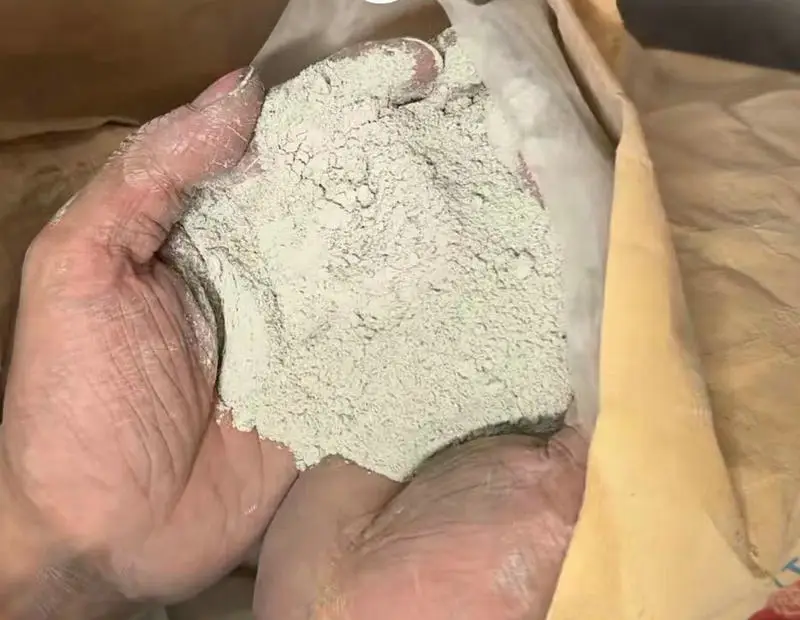The refractory materials used in induction furnace linings should meet certain conditions to cope with the harsh working environment of the linings. The refractoriness of steelmaking refractory materials should be ≥1700℃, and the refractoriness of cast iron smelting refractory materials should be ≥1500℃. The refractory materials used have good high temperature stability, strong corrosion resistance, and small difference in basicity with slag; they have certain strength at room temperature and high temperature; they have low resistance, good insulation and low specific resistivity. The lining materials should avoid the introduction of ferromagnetic materials that can significantly reduce the specific resistivity and insulation of the materials. Materials that are easy to form low melting point phases in the raw materials can also play a similar role. The lining materials have good thermal insulation properties, and the refractory materials used should be economical and environmentally friendly.
Ramming materials are used for the refractory lining of induction furnaces. According to whether water is added, the ramming materials for induction furnaces can be divided into dry and wet ramming materials. At present, dry ramming materials are recognized by most induction furnace manufacturers. Wet ramming is for the purpose of reusing the crucible of the lining or smelting certain metals with very low melting points (such as Zn). Dry ramming mass has many advantages that wet ramming mass does not have: it does not contain any liquid binder (water), has a short drying and sintering time, and does not require exhaust; it has good stability, fast construction speed, and is easy to dismantle the furnace, which saves the material trapping time and pouring maintenance time of wet ramming, and the shutdown period is relatively short; the sintered-semi-sintered-unsintered structure of the furnace lining can maintain the volume stability of the furnace lining, resist slag penetration, prevent the formation of large cracks, and improve the safety of the furnace lining.

According to different chemical properties, ramming mass can be divided into three types: neutral ramming mass, alkaline ramming mass and acidic ramming mass. The main component of alkaline ramming mass is alkaline oxide. At present, the alkaline material used in large quantities is magnesium material, which has the advantages of excellent corrosion resistance, high melting point, high load softening temperature, and no reaction with alkaline slag or alkaline melt. However, magnesium ramming mass has poor thermal shock stability, high sintering temperature, and thermal shock during operation will cause cracking and peeling of the furnace lining material, which is only suitable for small-capacity induction furnaces.
The main component of acidic dry ramming mass is SiO2. In the presence of other impurities, the crystal transformation of SiO2 is complex, and the excessively high heating rate during furnace baking will greatly reduce the melting temperature of the material. Siliceous dry ramming mass can be used in various induction furnace lining materials, but its refractoriness and purity limit its use.
The main components of neutral dry ramming mass are neutral oxides such as Al2O3 or their complexes. Corundum dry ramming mass has the characteristics of high temperature resistance, good slag erosion resistance, no effect on molten steel quality, short construction time and no need for baking during construction. It is widely used in various alloy steel smelting. Corundum dry ramming mass currently still has the disadvantages of low service life, difficulty in sintering and difficult control of thermal expansion. Magnesium-aluminum spinel has good slag penetration resistance. Adding fused magnesia sand to corundum material to generate magnesium-aluminum spinel in situ can reduce the penetration of molten iron or slag into refractory materials and improve the slag resistance of the material. The secondary spinelization reaction during the use of aluminum-magnesium materials can effectively inhibit the cracking of the furnace lining. The aluminum-magnesium ramming mass for the furnace lining can reduce the thermal cracking of the furnace lining material and reduce the generation of microcracks in the material.
In addition, according to the type of material used, the ramming mass can be divided into silicon ramming mass, corundum ramming mass, magnesium ramming mass, magnesium-calcium ramming mass, magnesium-aluminum ramming mass, aluminum-magnesium ramming mass and Al2O3~SiC~C ramming mass; according to the different parts of use, the ramming mass can be divided into the working lining of the tundish, the bottom of the electric furnace and the power frequency melting groove dry ramming mass.
